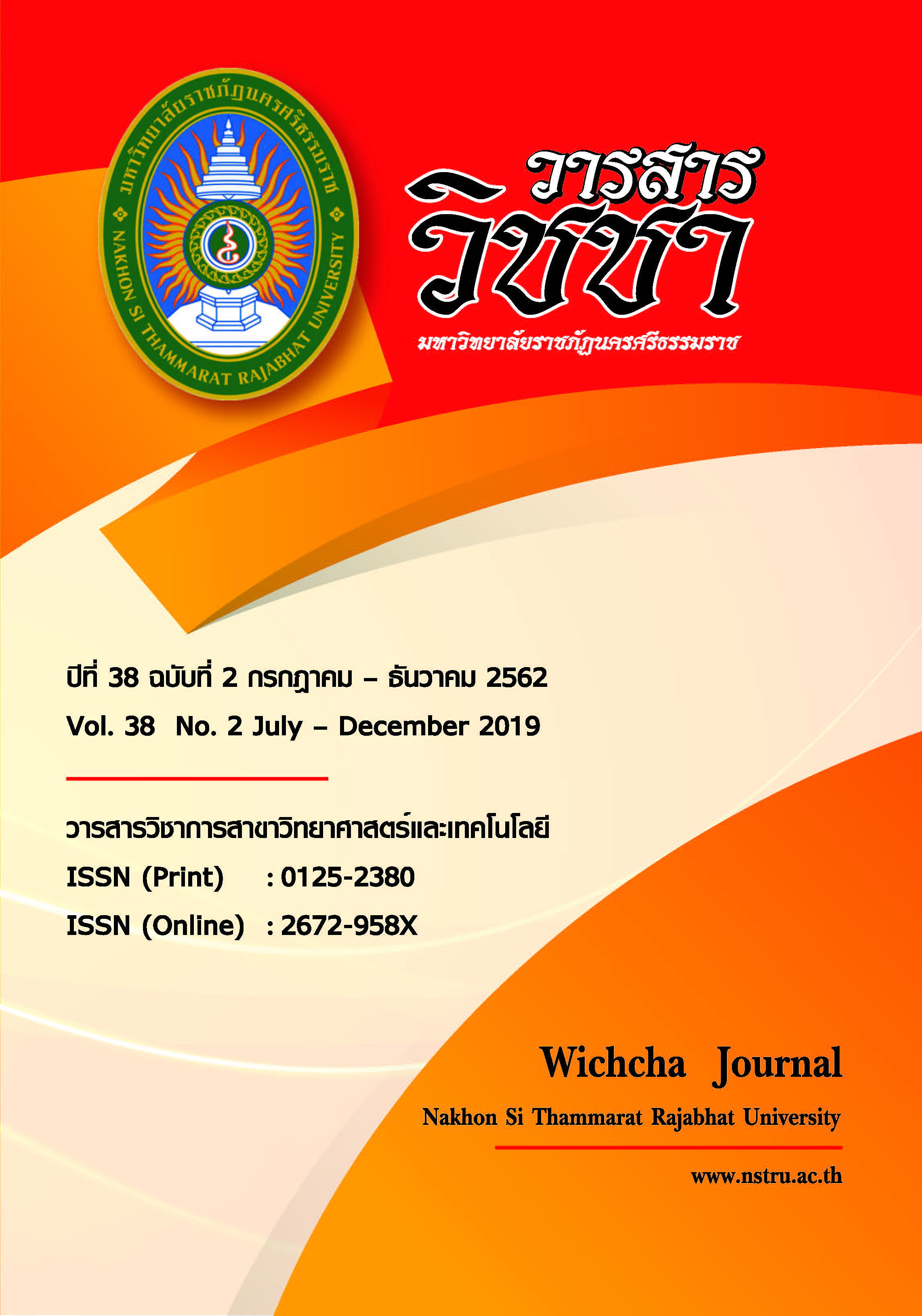Reducing of the Wasting Time in the Dirt Testing Process of Rubber by Lean Six Sigma Approach : A Case Study in a Rubber Factory การลดเวลาสูญเสียในกระบวนการทดสอบปริมาณสิ่งสกปรกในยางแท่ง ด้วยแนวคิดลีนซิกซ์ซิกม่า : กรณีศึกษาโรงงานผลิตยางแท่ง
Main Article Content
Abstract
This research is purpose to reduce the wasting time in the testing process to find the quantity of dirt in the block rubber under possible limitations and be within standard defined. From the studying of problem condition in the testing process to find the quantity of dirt in the block rubber at Quality control department found that before the process improvement, there is waste of time higher than the standard was set by factory. The mainly caused is due to electric heater cannot heat dissipation all over the stove and take time to boil the sample for too long which is not catch up to sampling to be tested and affected to testing process to find the quantity of dirt in the block rubber is lack of efficiency and after improved by Lean Six Sigma. Therefore, it has been improved the process by changing from the heater that is heated by an electric heater to be infrared heater instead to reduce waste time and increase the test efficiency. It was found that can increase the number of samples in the test and process capability (Cpk) is 2.47 which shown that the process is very good and from the confirmation of the results, no loss was found by the reliability range of the process is 1.78 < Cpk < 3.16 and from the project found that the break-even point is 1.46 years.
Article Details
เนื้อหาและข้อมูลในบทความที่ลงตีพิมพ์ในวารสารวิชชา มหาวิทยาลัยราชภัฏนครศรีธรรมราช ถือเป็นข้อคิดเห็นและความรับผิดชอบของผู้เขียนบทความโดยตรง ซึ่งกองบรรณาธิการวารสารไม่จำเป็นต้องเห็นด้วยหรือร่วมรับผิดชอบใด ๆ
บทความ ข้อมูล เนื้อหา รูปภาพ ฯลฯ ที่ได้รับการตีพิมพ์ในวารสารวิชชา มหาวิทยาลัยราชภัฏนครศรีธรรมราช ถือเป็นลิขสิทธ์ของวารสารวิชชา มหาวิทยาลัยราชภัฏนครศรีธรรมราช หากบุคคลหรือหน่วยงานใดต้องการนำข้อมูลทั้งหมดหรือส่วนหนึ่งส่วนใดไปเผยแพร่ต่อหรือเพื่อการกระทำการใด ๆ จะต้องได้รับอนุญาตเป็นลายลักษณ์อักษรจากวารสารวิชชา มหาวิทยาลัยราชภัฏนครศรีธรรมราชก่อนเท่านั้น
The content and information in the article published in Wichcha journal Nakhon Si Thammarat Rajabhat University, It is the opinion and responsibility of the author of the article. The editorial journals do not need to agree. Or share any responsibility.
References
นิภาส ลีนะธรรม สุวรรณา พลภักดี และภัทราวรรณ คหะวงศ์. (2560). การลดเวลาสูญเสียในแผนกคลังสินค้าด้วยแนวคิดลีนซิกซ์ซิกม่า : กรณีศึกษา โรงงานผลิตยางแท่ง. ใน การประชุมวิชาการทางเทคโนโลยีอุตสาหกรรม ครั้งที่ 3 (หน้า 130-141). อุบลราชธานี: มหาวิทยาลัยราชภัฏอุบลราชธานี.
วัชรินทร์ ดงบัง. (2556). รังสีอินฟราเรดและการประยุกต์ใช้ในอุตสาหกรรมอาหาร. วารสารวิทยาศาสตร์บูรพา, 18(2), 299-304.
ศุภวัชร์ เมฆบูรณ์ และจีรวัฒน์ ปล้องใหม่. (2560). การลดของเสียในกระบวนการผลิตโพลิเมอร์โซลิด คาปาซิเตอร์. วิศวกรรมสารเกษมบัณฑิต, 7(1), 105-123.
สถาบันวิจัยยาง. (2561). การทดสอบตามมาตรฐานยางแท่งเอสทีอาร์. กรุงเทพ: กองการยาง กรมวิชาการเกษตร.
สุธี อินทรสกุล บัญชา สมบูรณ์สุข และปุรวิชญ์ พิทยาภินันท์. (2560). อุตสาหกรรมยางพาราไทย: สถานภาพและแนวทางการพัฒนาสู่ประชาคมเศรษฐกิจอาเซียน. วารสารมนุษยศาสตร์และสังคมศาสตร์, 8(ฉบับพิเศษ), 80-107.
อำนาจ อมฤก. (2562). การลดของเสียในกระบวนการผลิตชิ้นส่วนเครื่องจักร: กรณีศึกษาบริษัท สุพรีม พรีซิชั่น จำกัด. วารสารข่ายงานวิศวกรรมอุตสาหการไทย, 5(1), 73-95.
Breyfogle III, F.W. (2003). Implementing Six Sigma: smarter solutions using statistical methods. Texas: John Wiley & Sons.
Hassan, M. (2013). Applying Lean Six Sigma for waste reduction in a manufacturing environment. American Journal of Industrial Engineering, 1(2), 28-35.
Kaushik, P. and Khanduja, D. (2011). DM make up water reduction in thermal power plants using Six Sigma DMAIC methodology. Journal of Scientific & Industrial Research, 8(1), 36-42.
Montgomery, D.C. (2005). Design and analysis of experiments. New York: John Wiley.
Montgomery, D.C. (2009). Introduction statistical quality control. Texas: John Wiley.
Ramasamy, S. (2009). Total quality management. New Delhi: McGraw-Hill.
Sliva, T. and Ferreira, P. (2017). Improve the extrusion process in tire production using Six Sigma methodology. In the 3rd International Conference on Manufacturing Engineering Society MESIC 2017. (1104-1111). Vigo: Spain.


